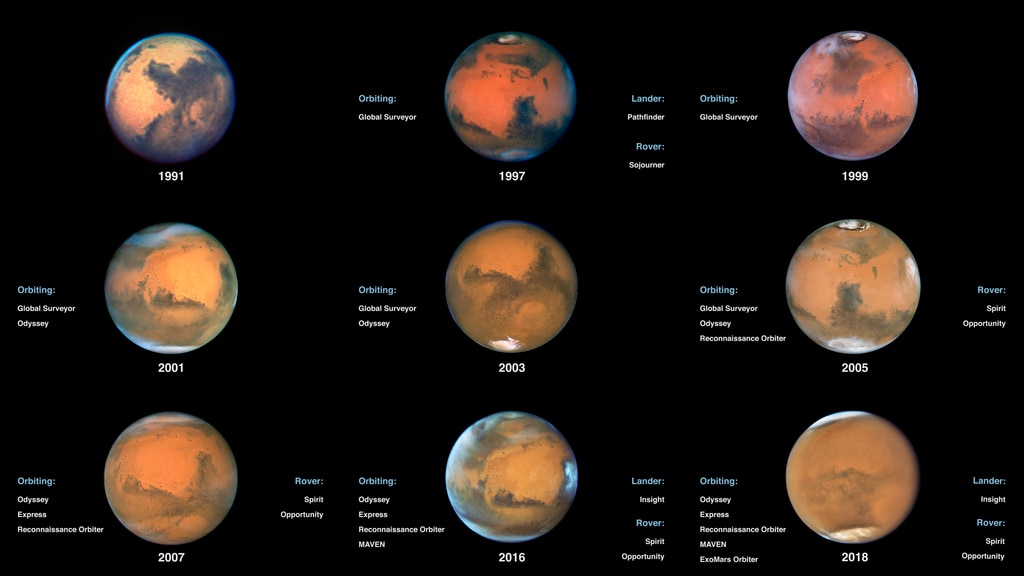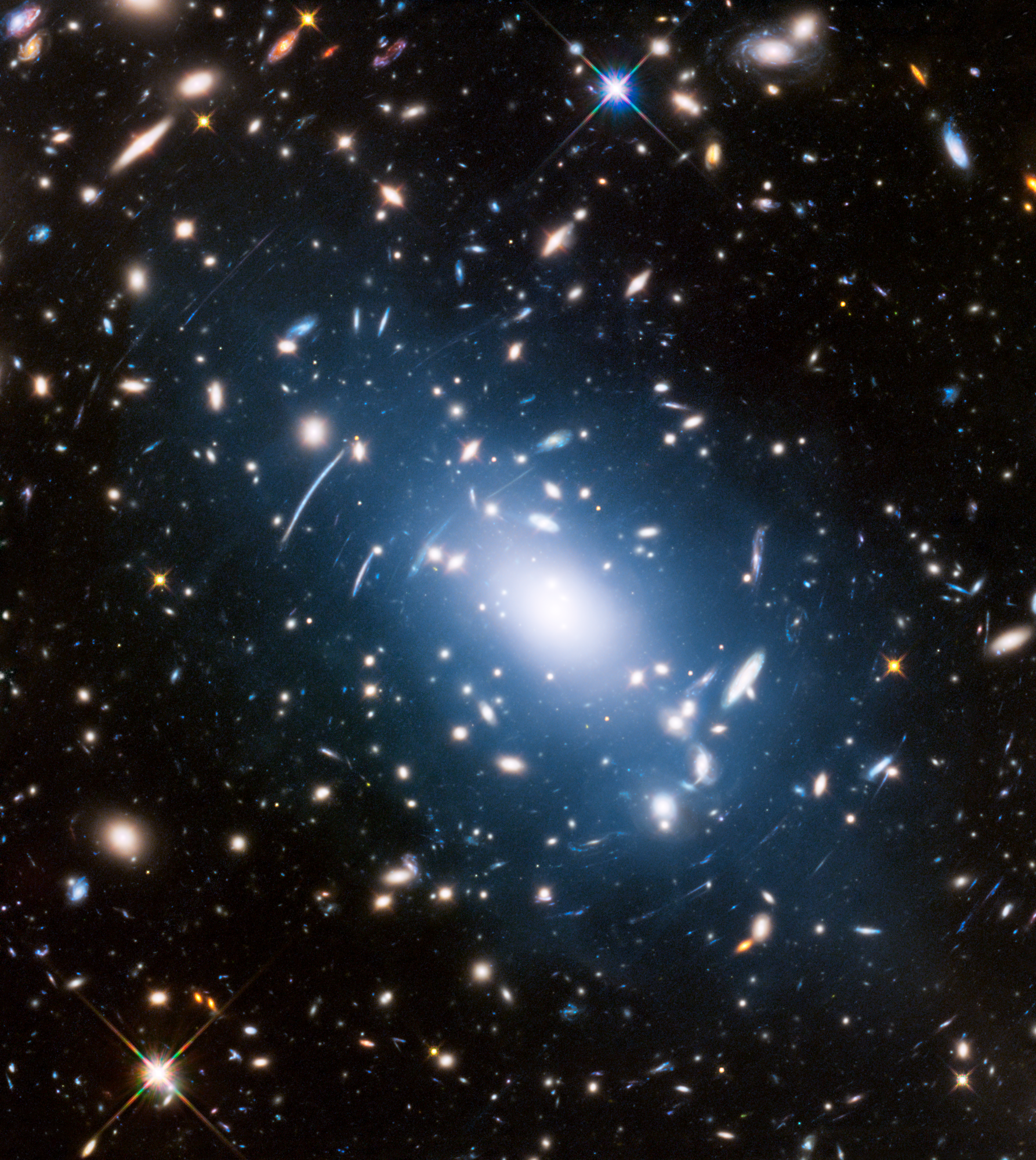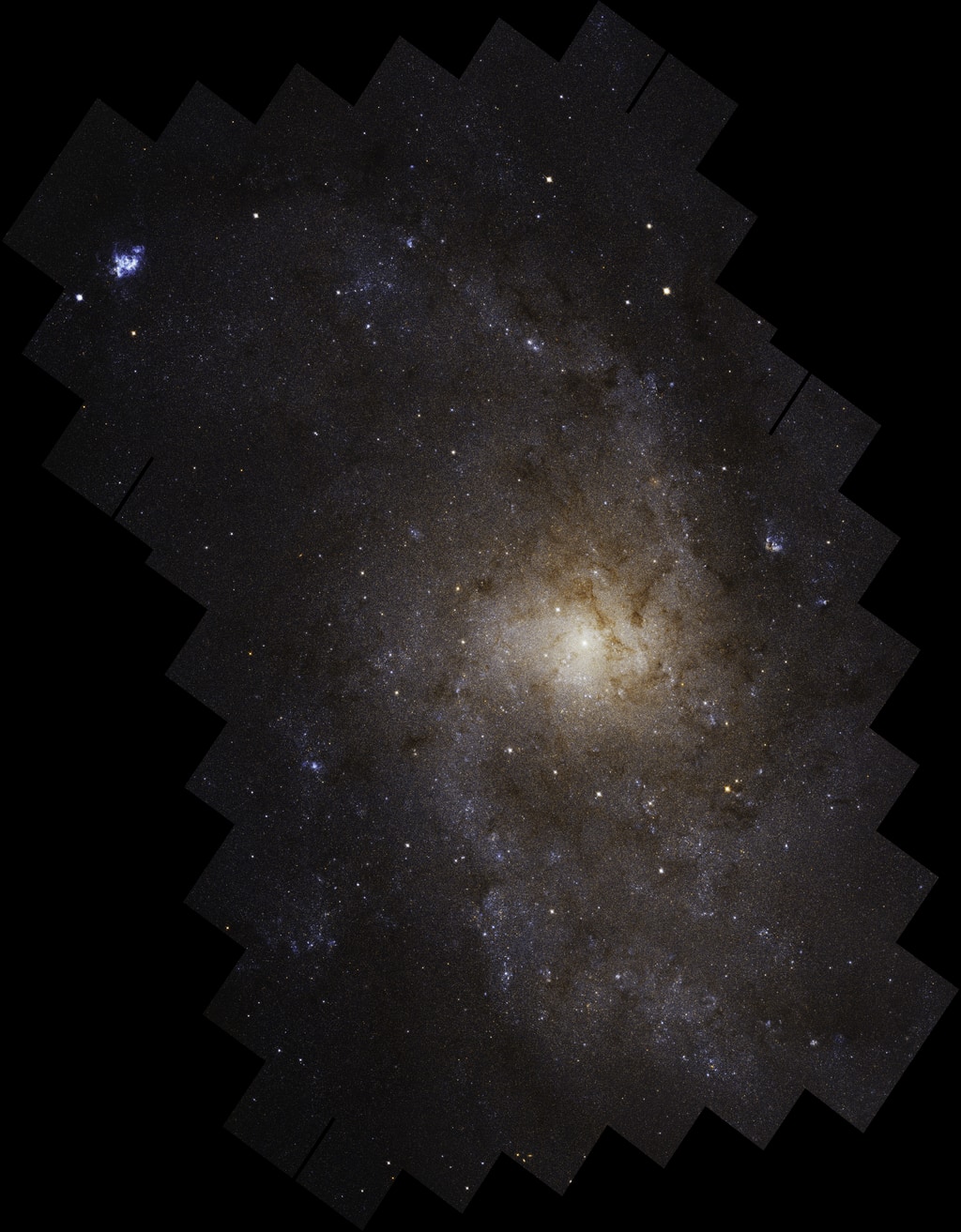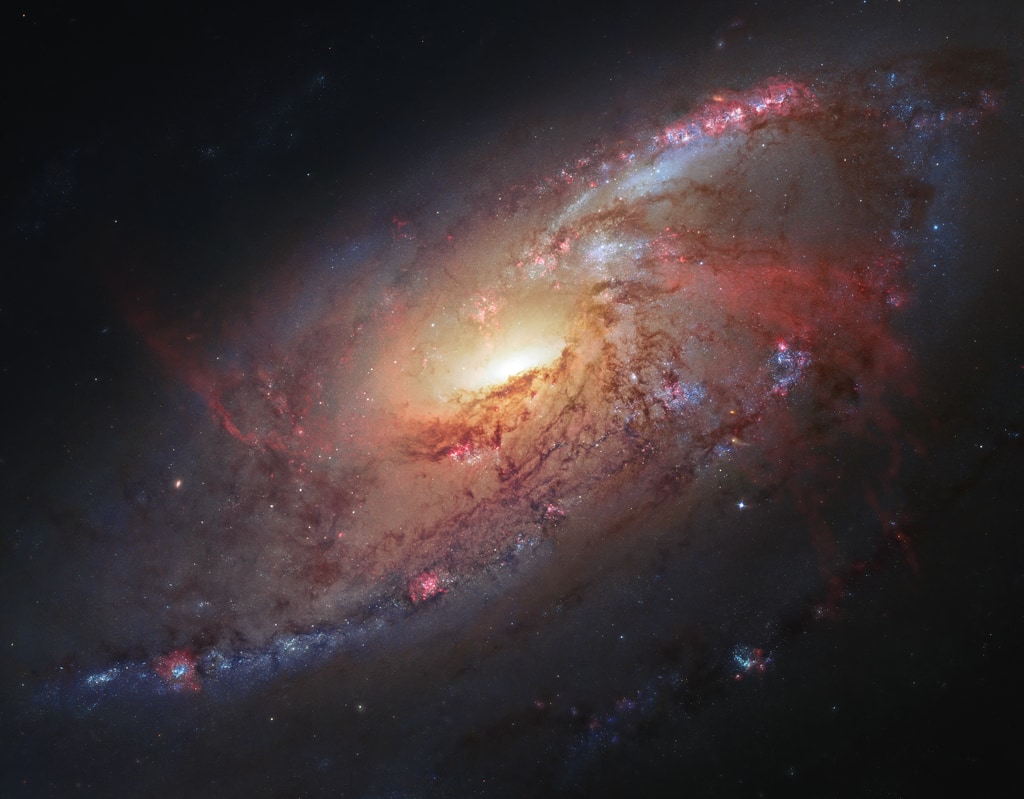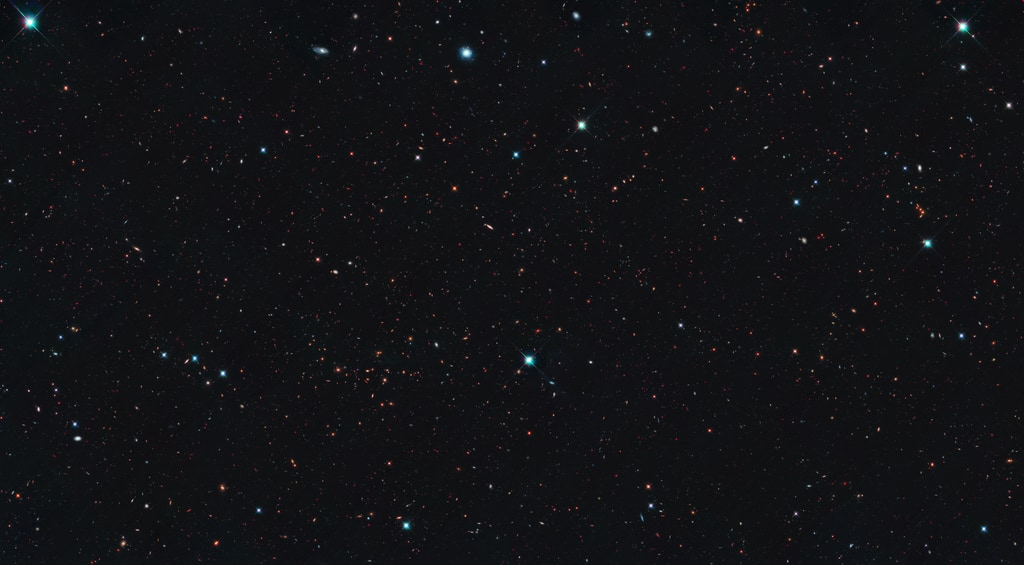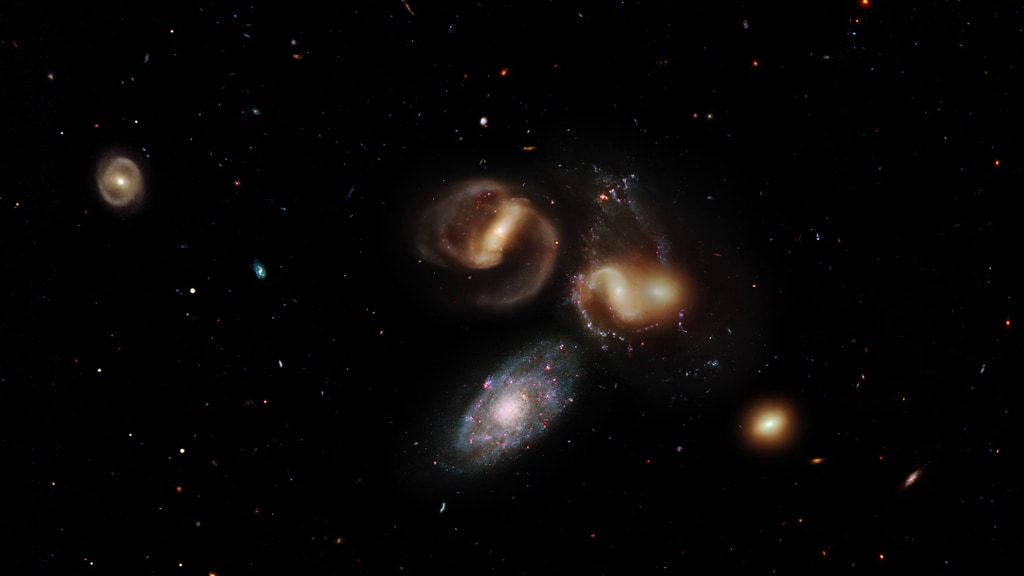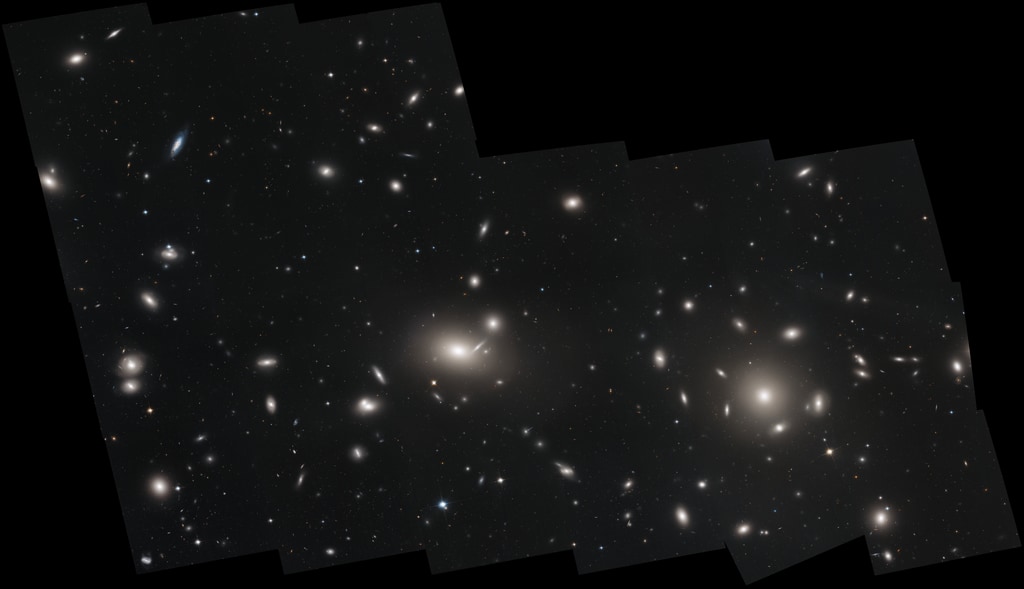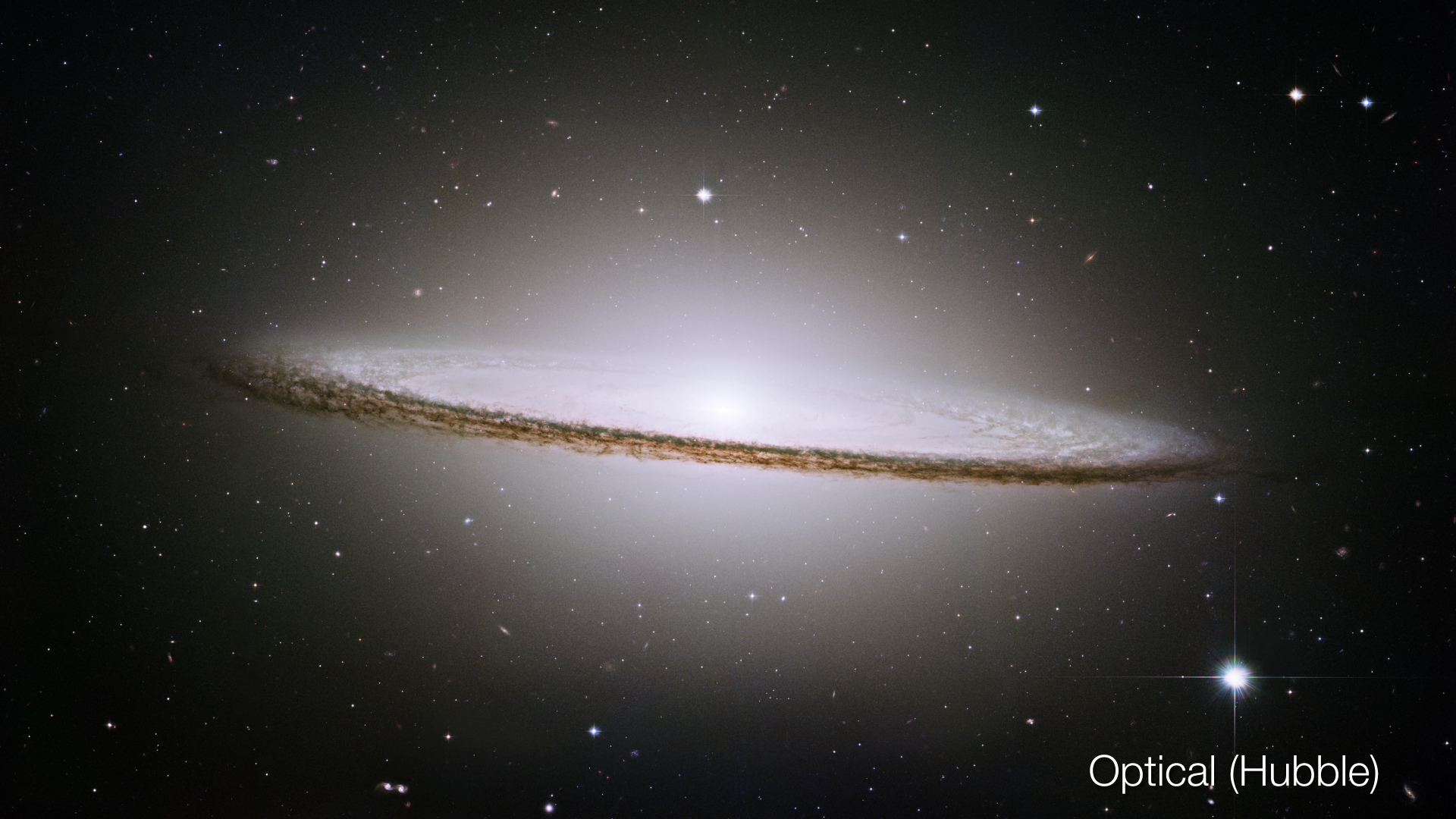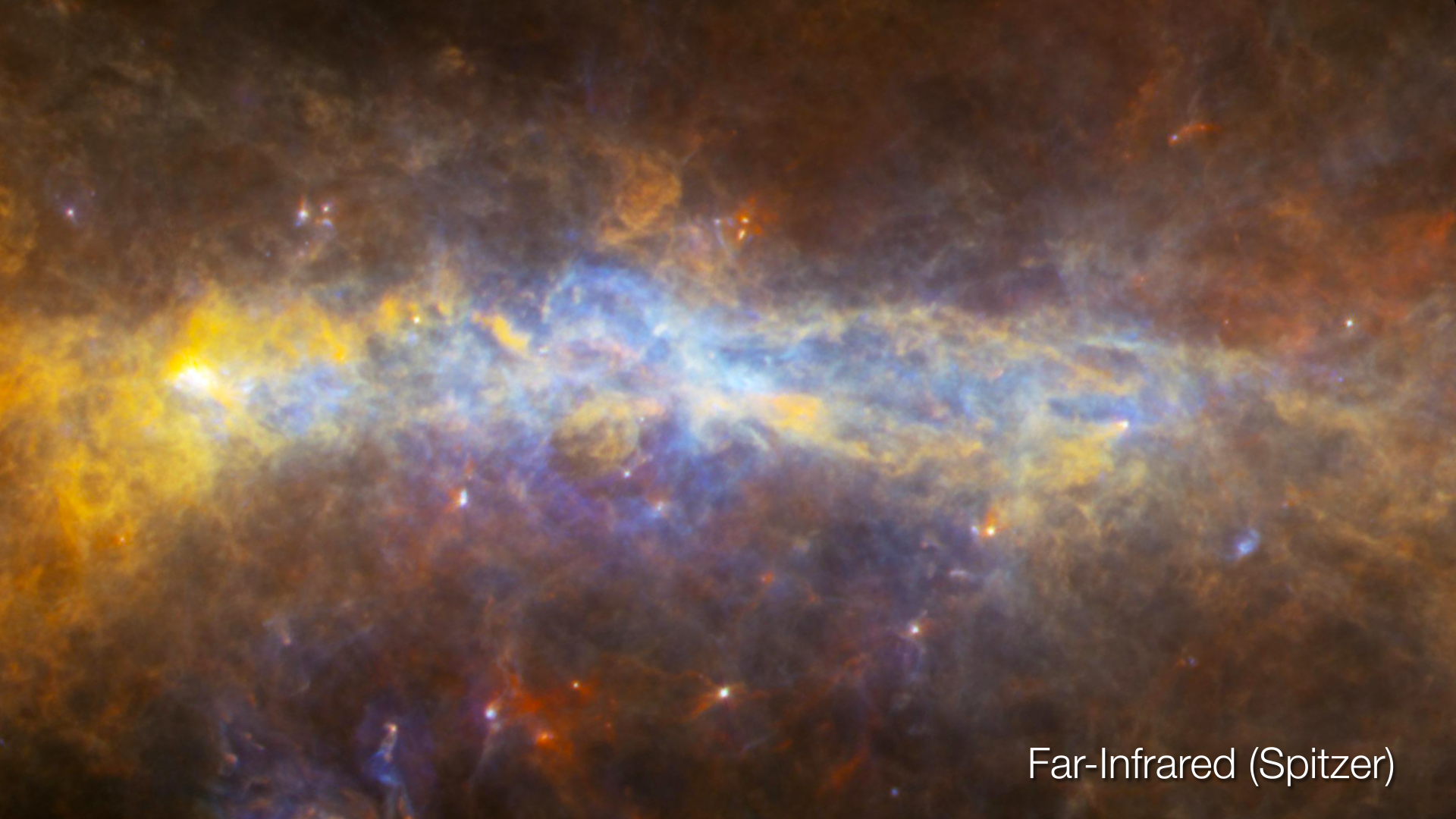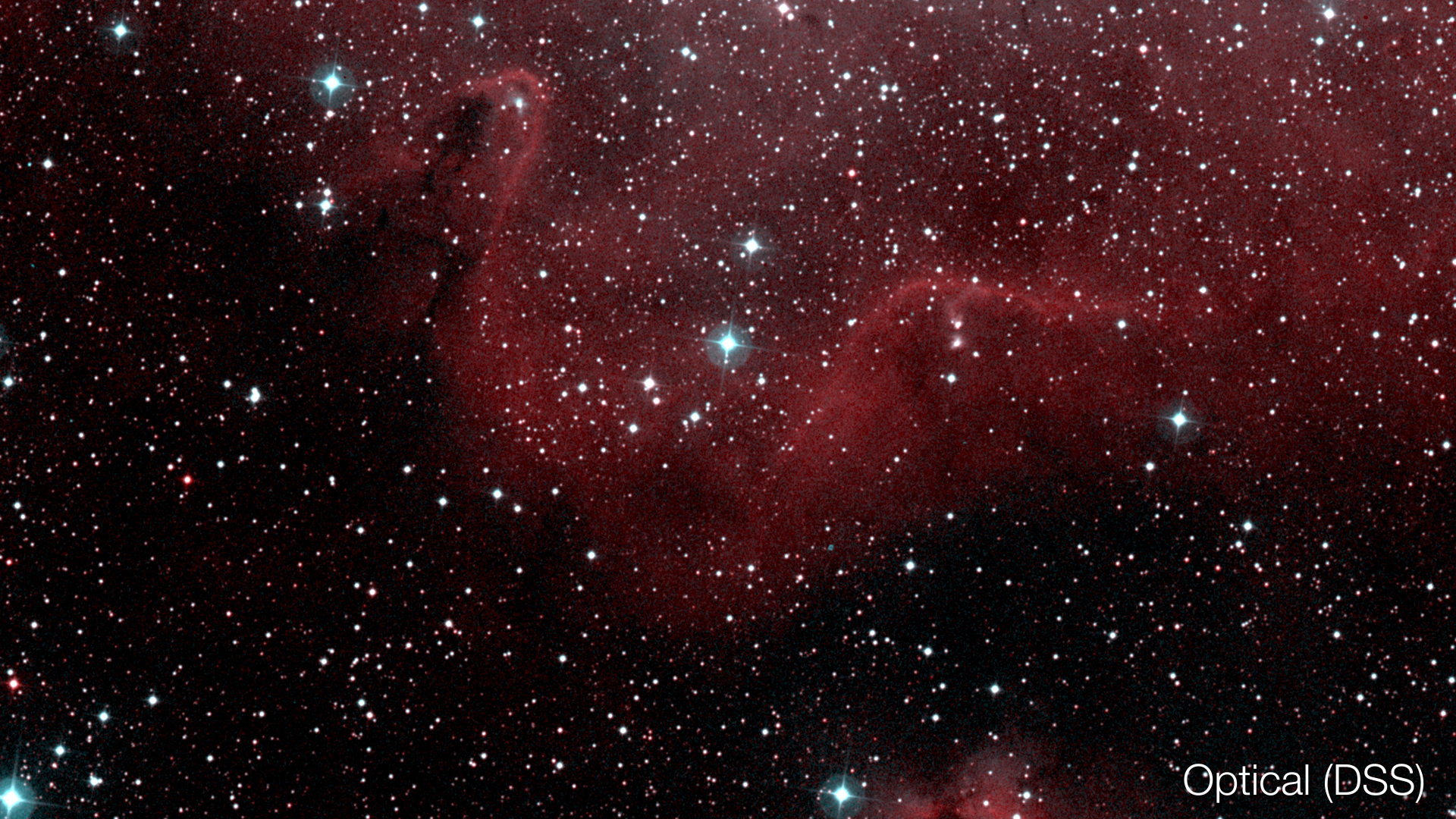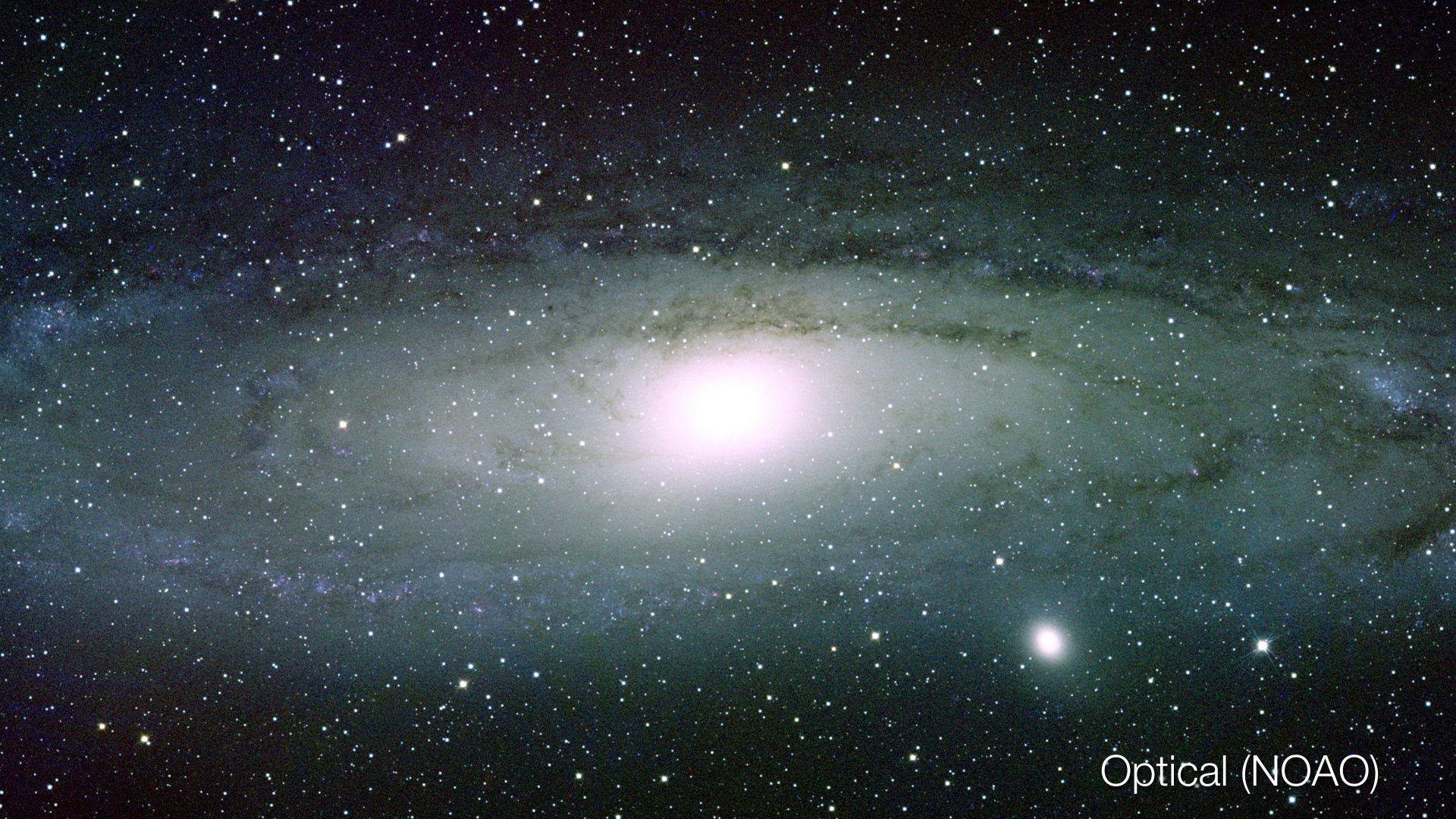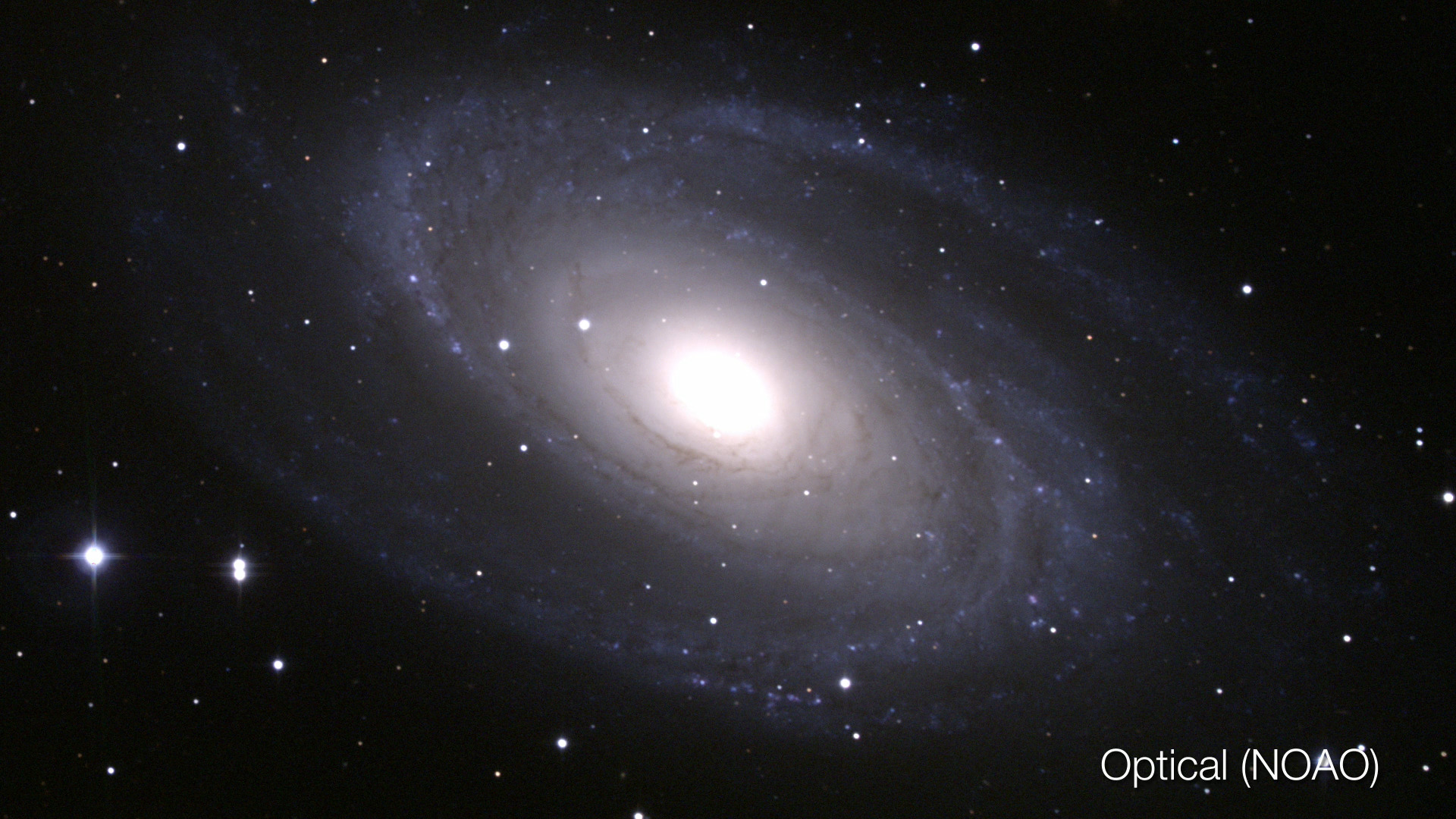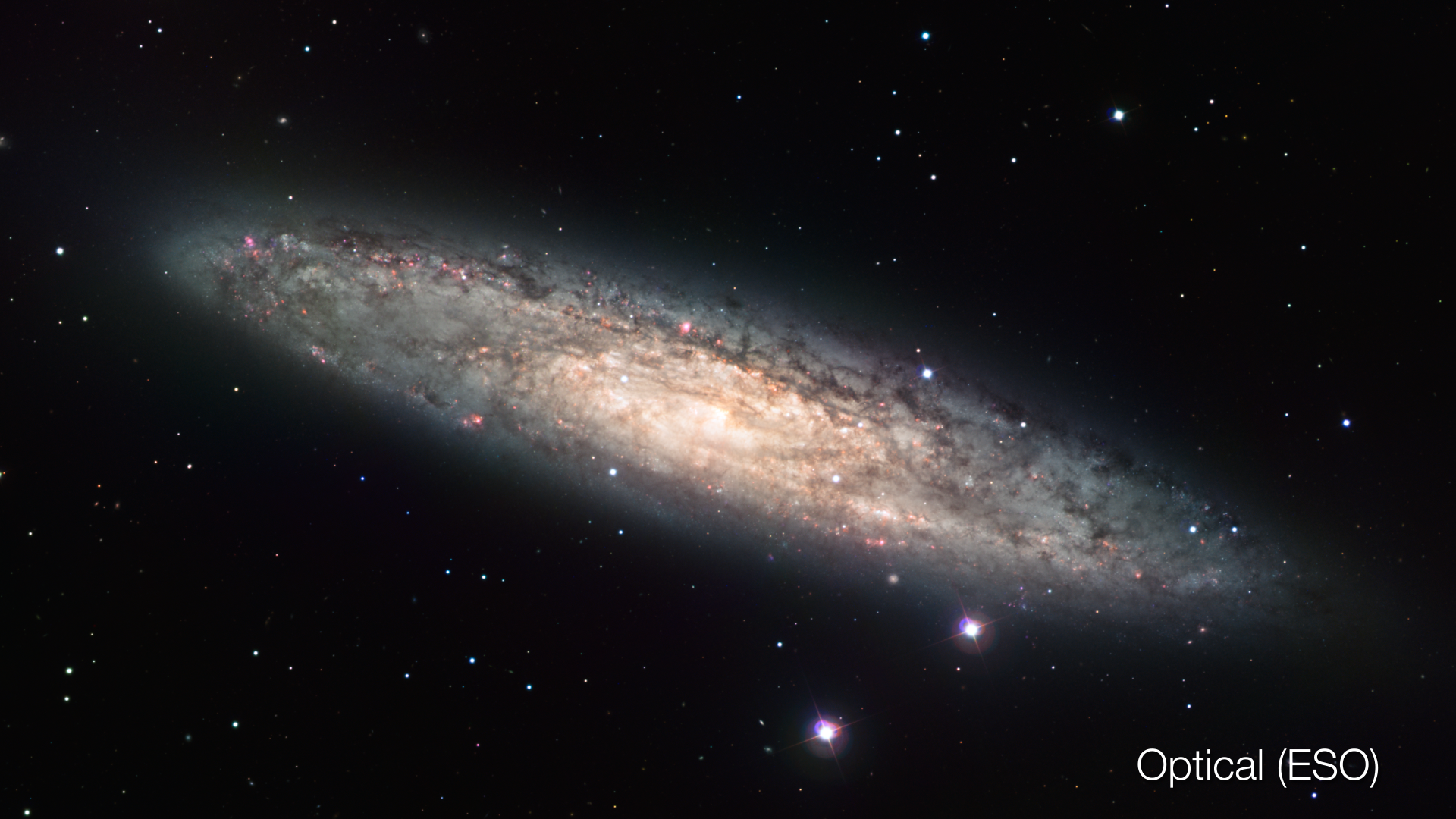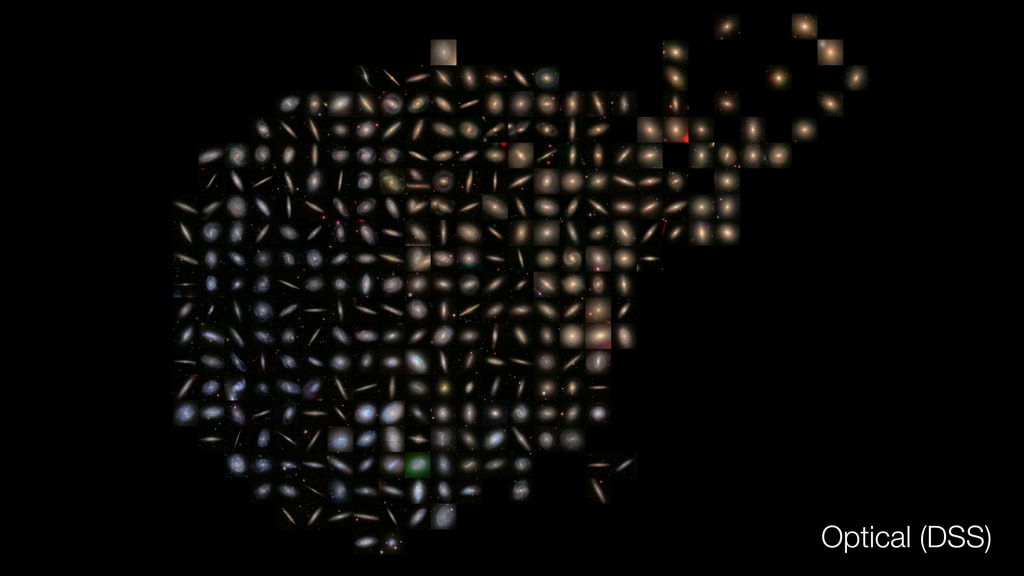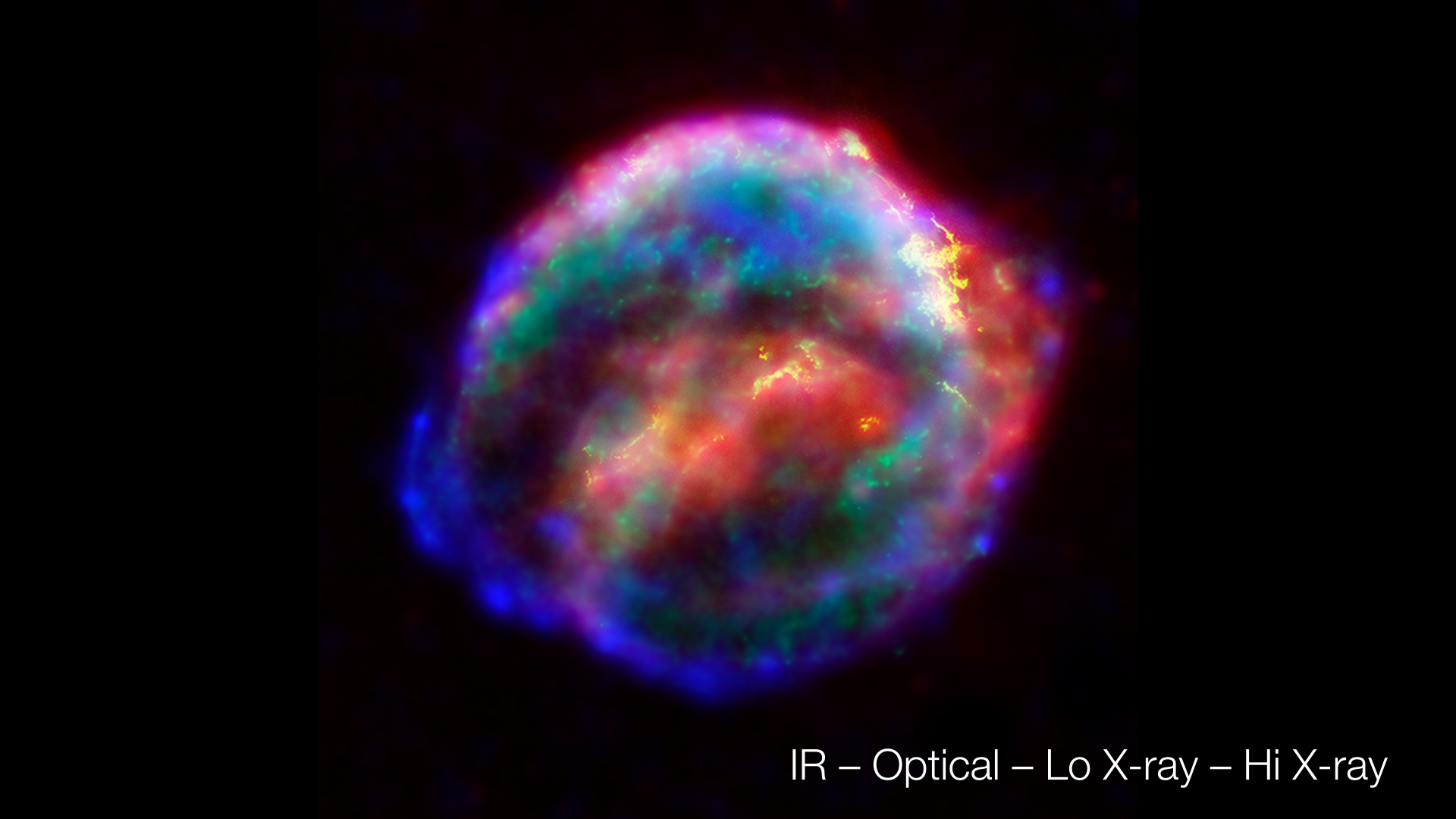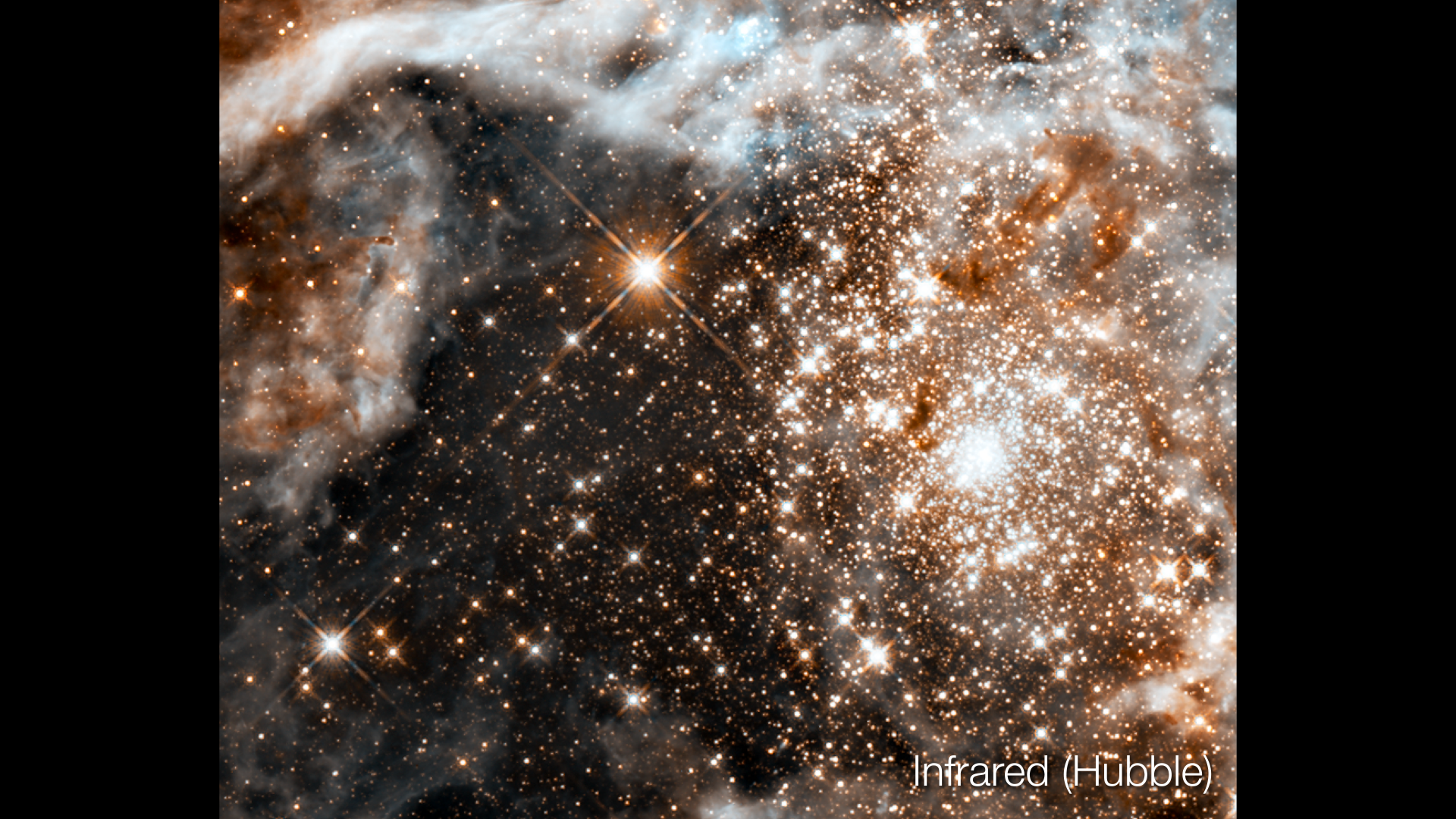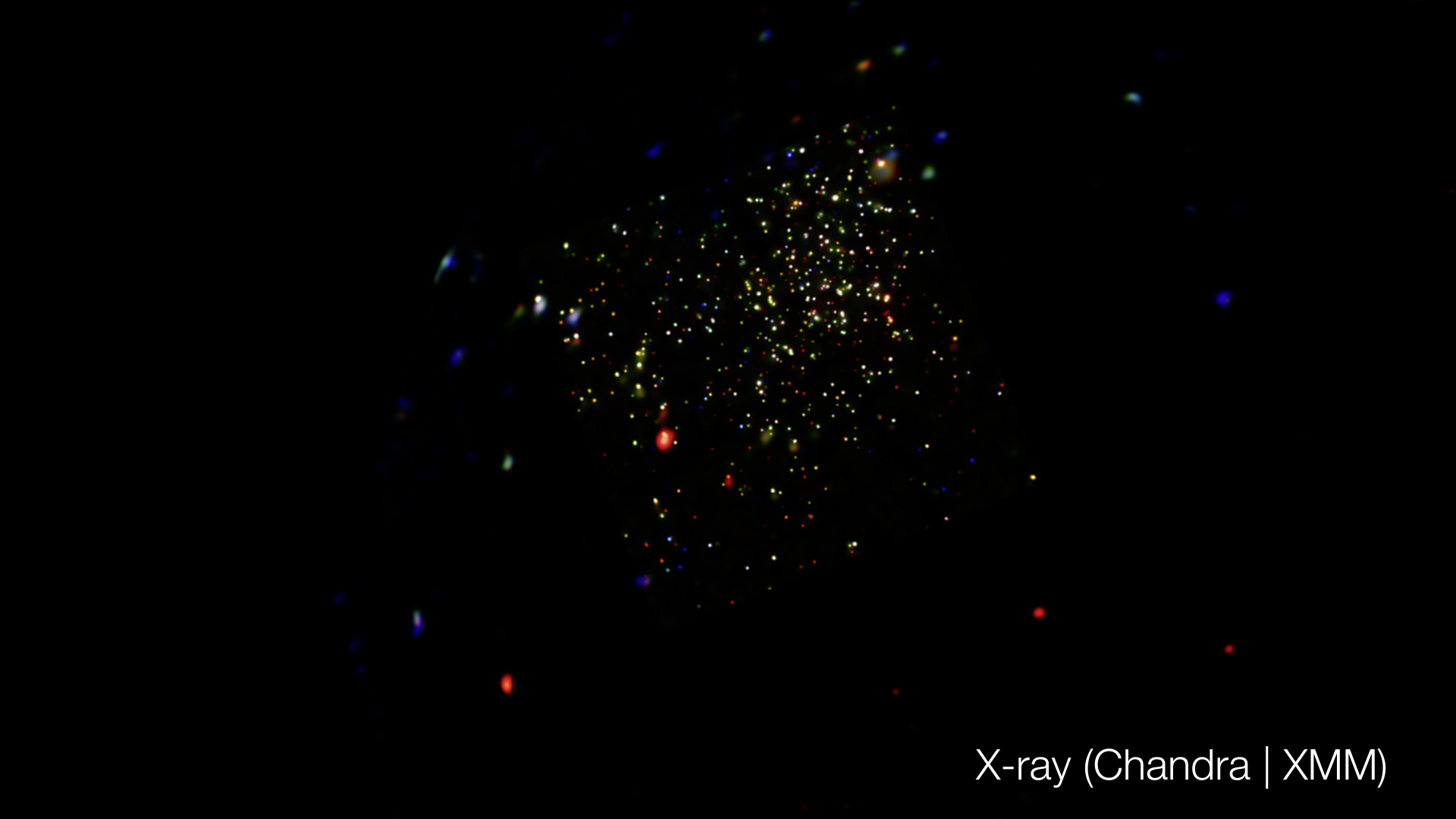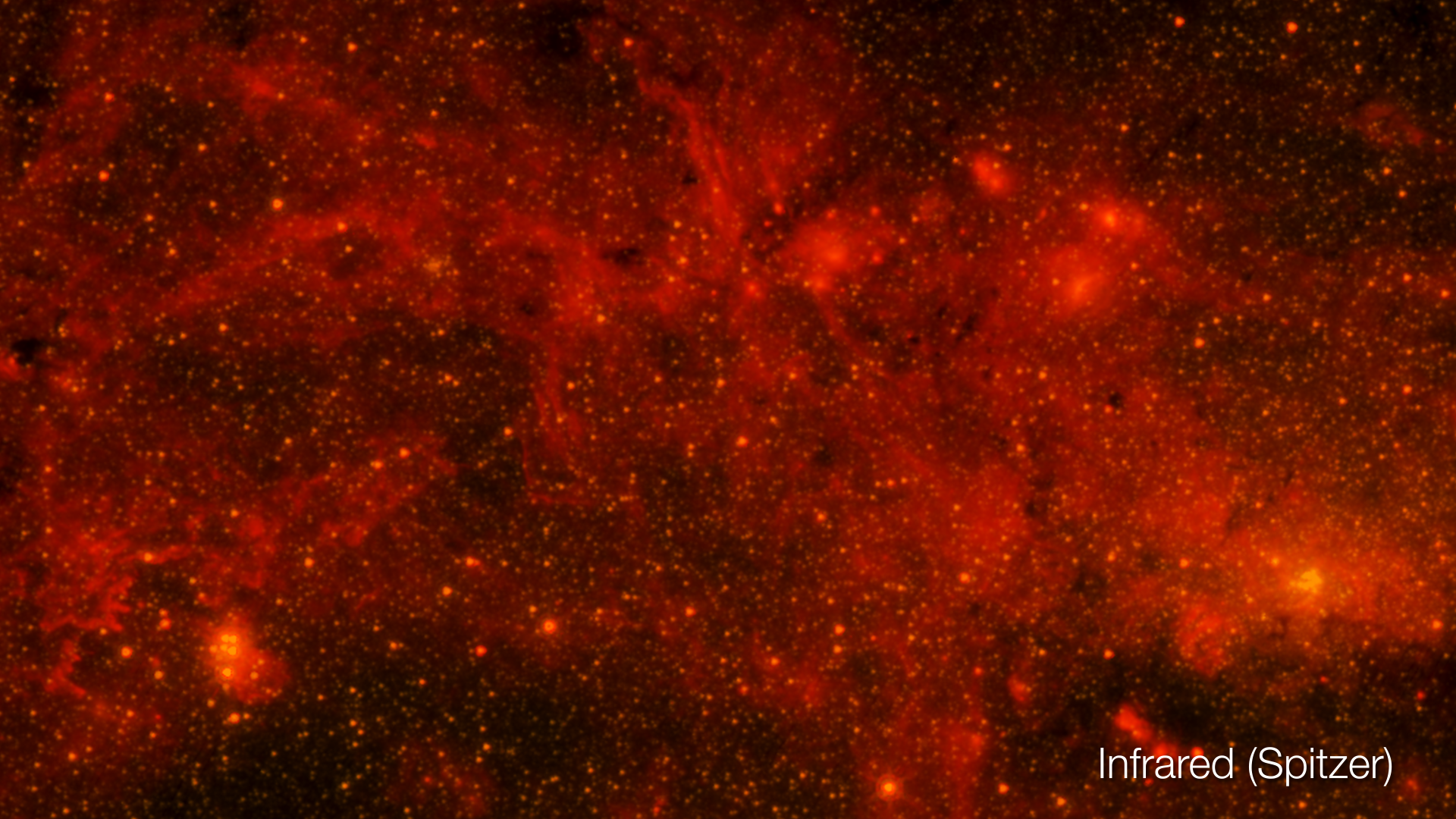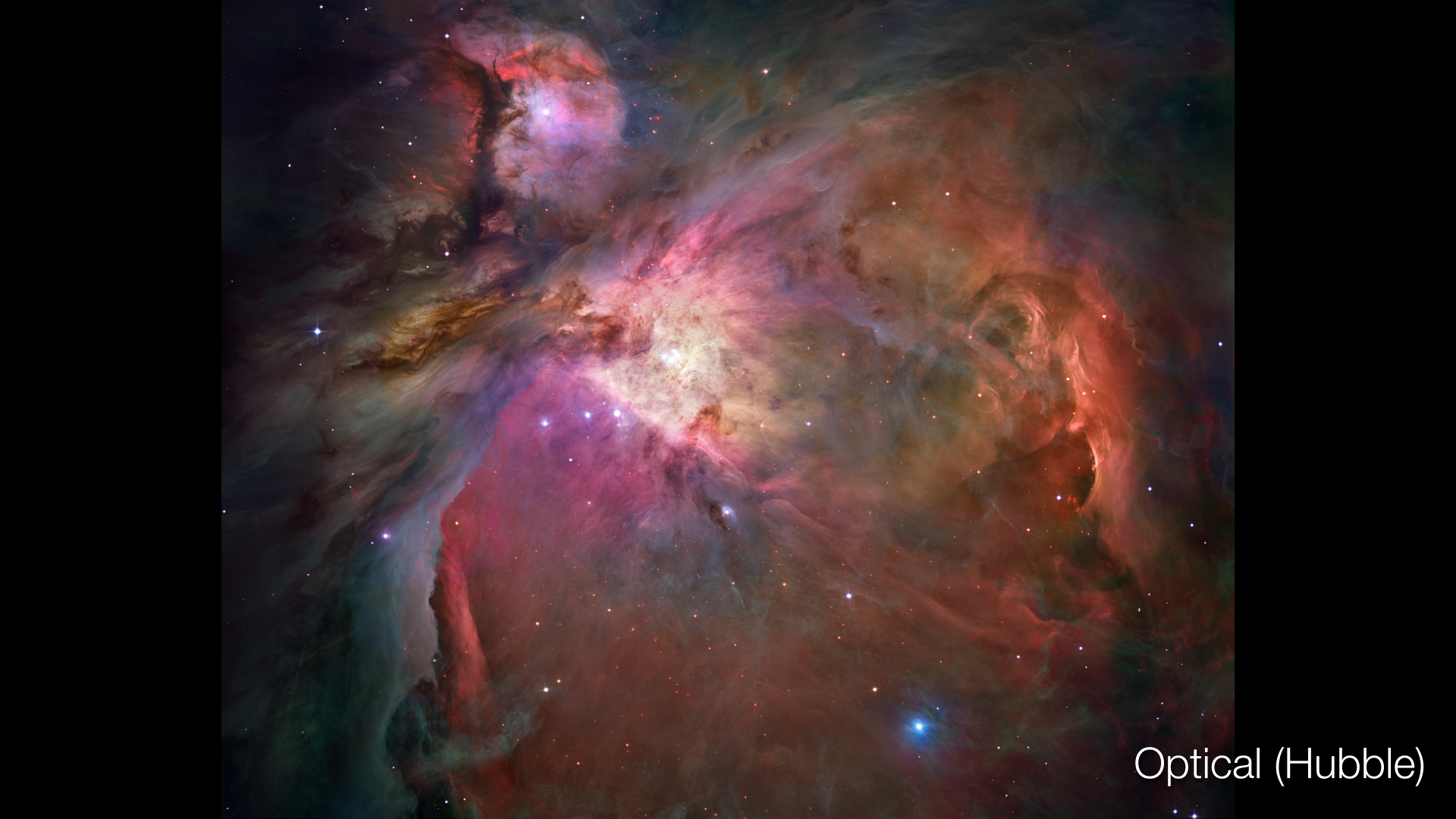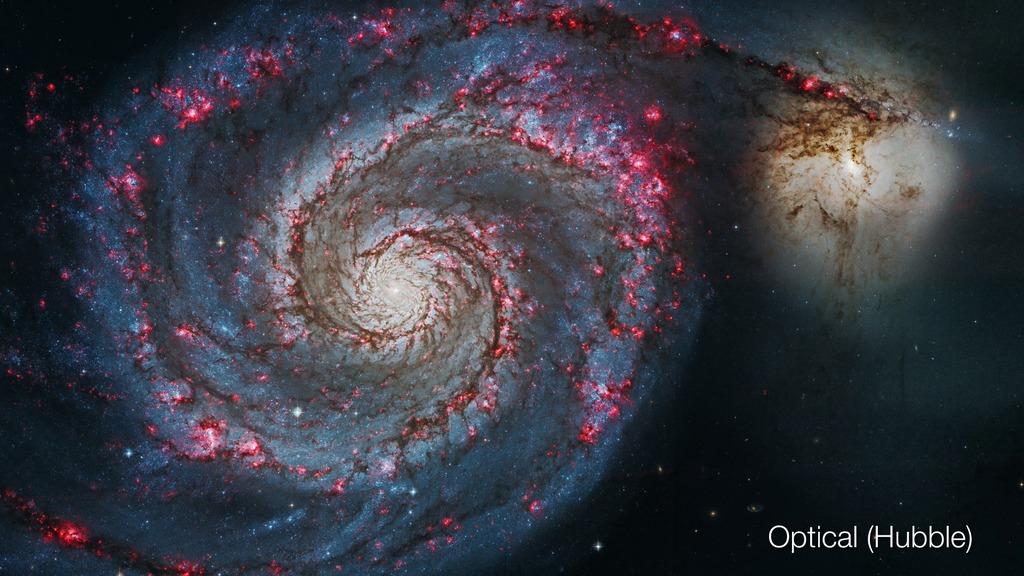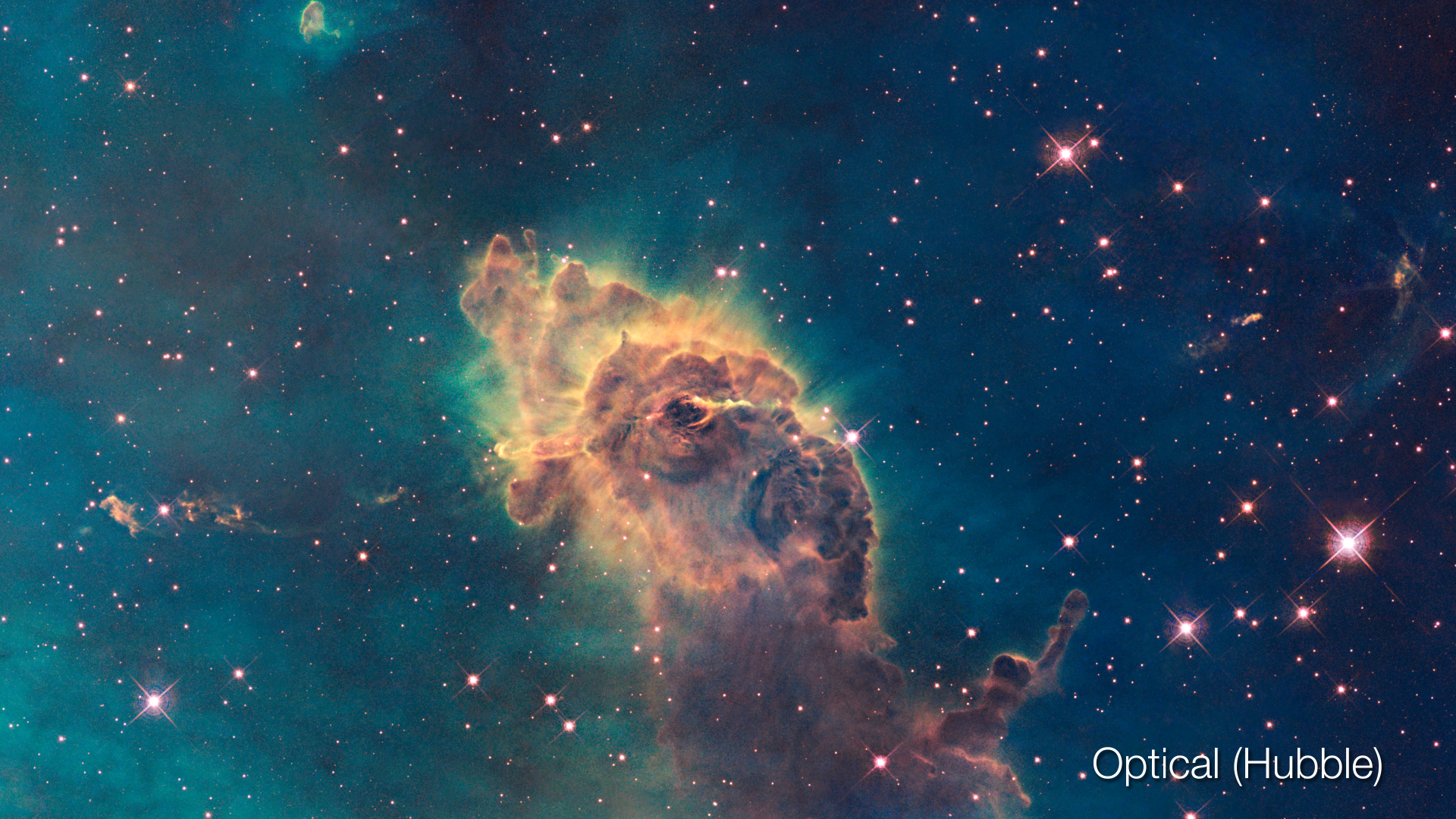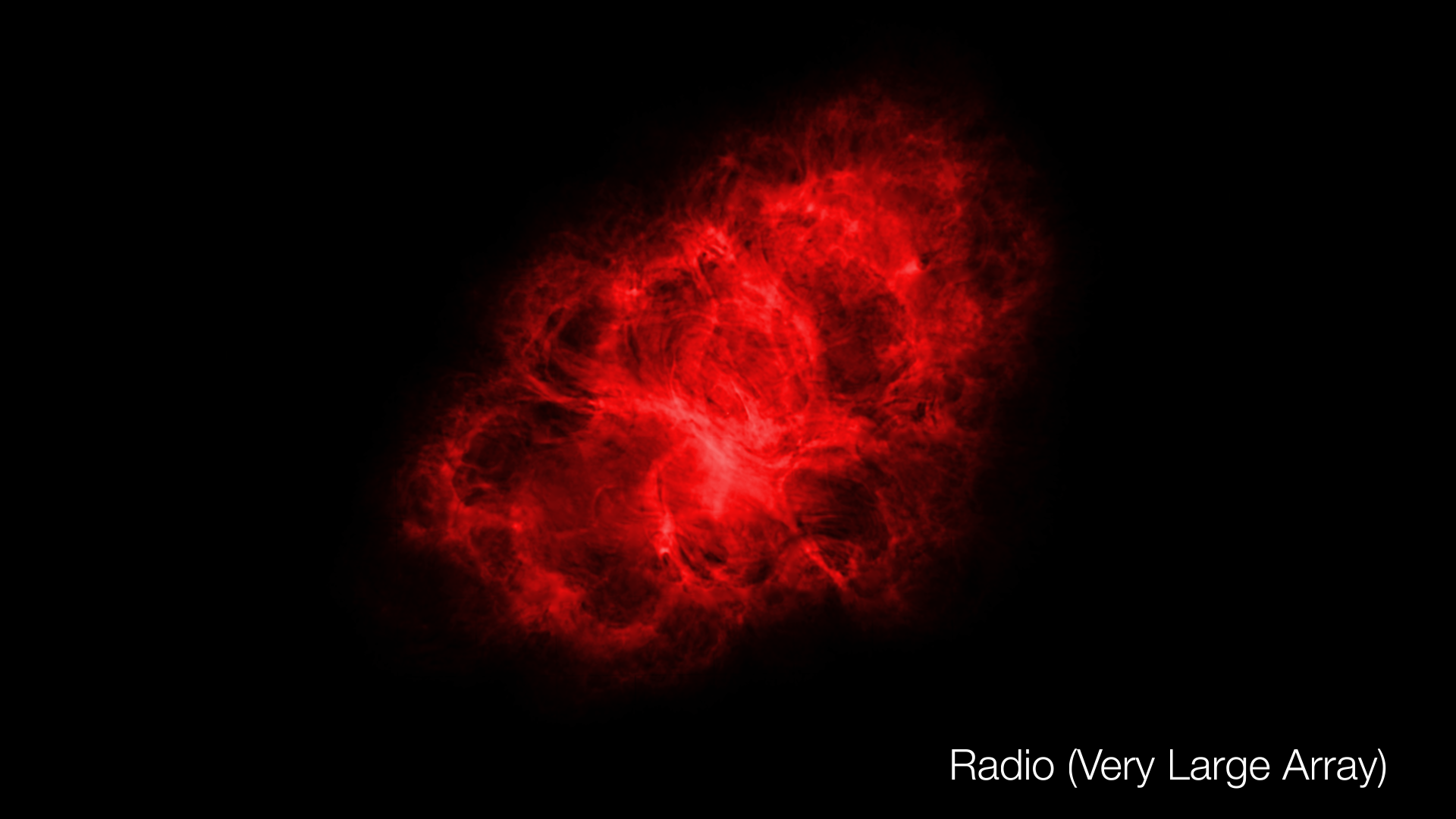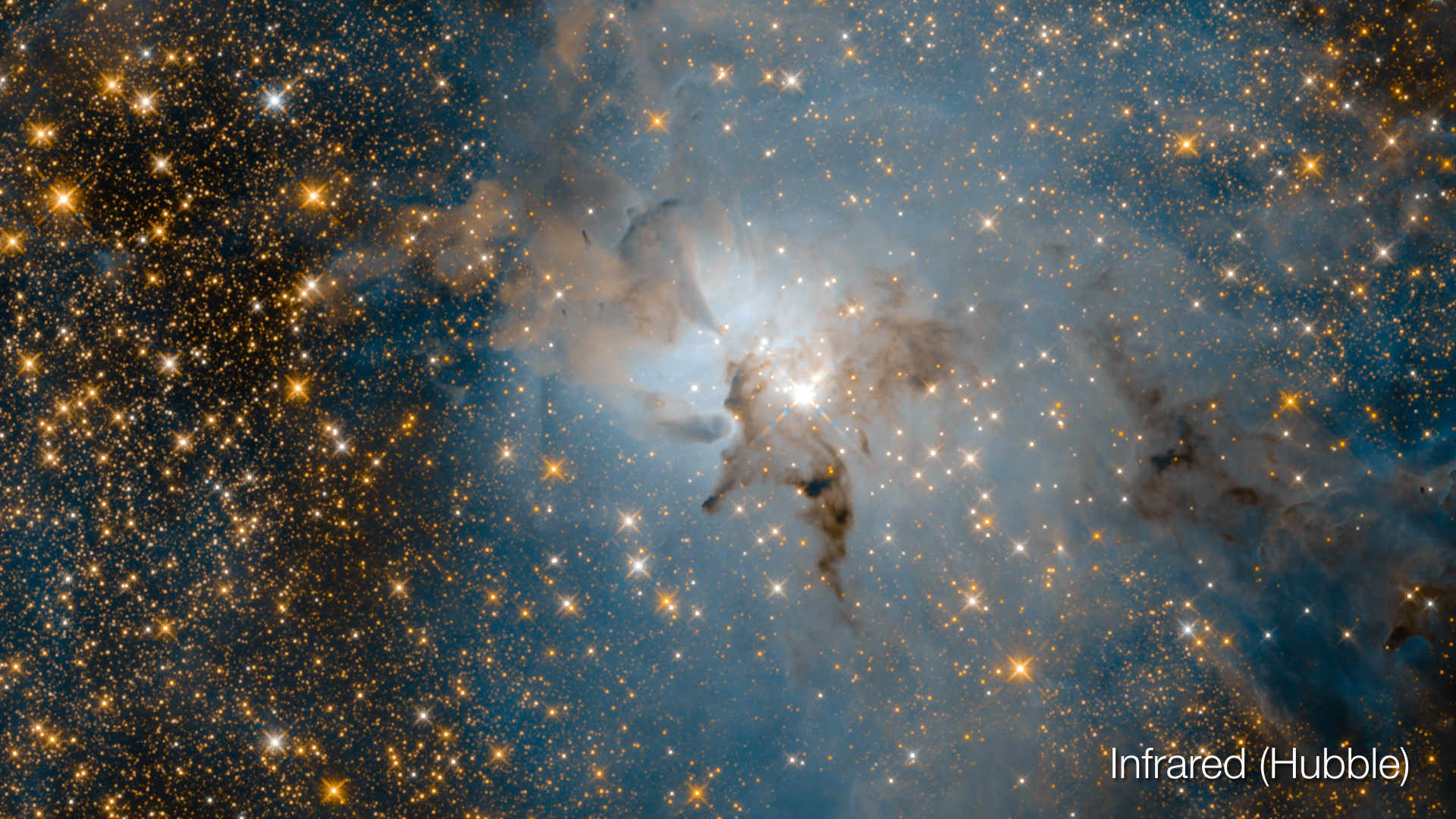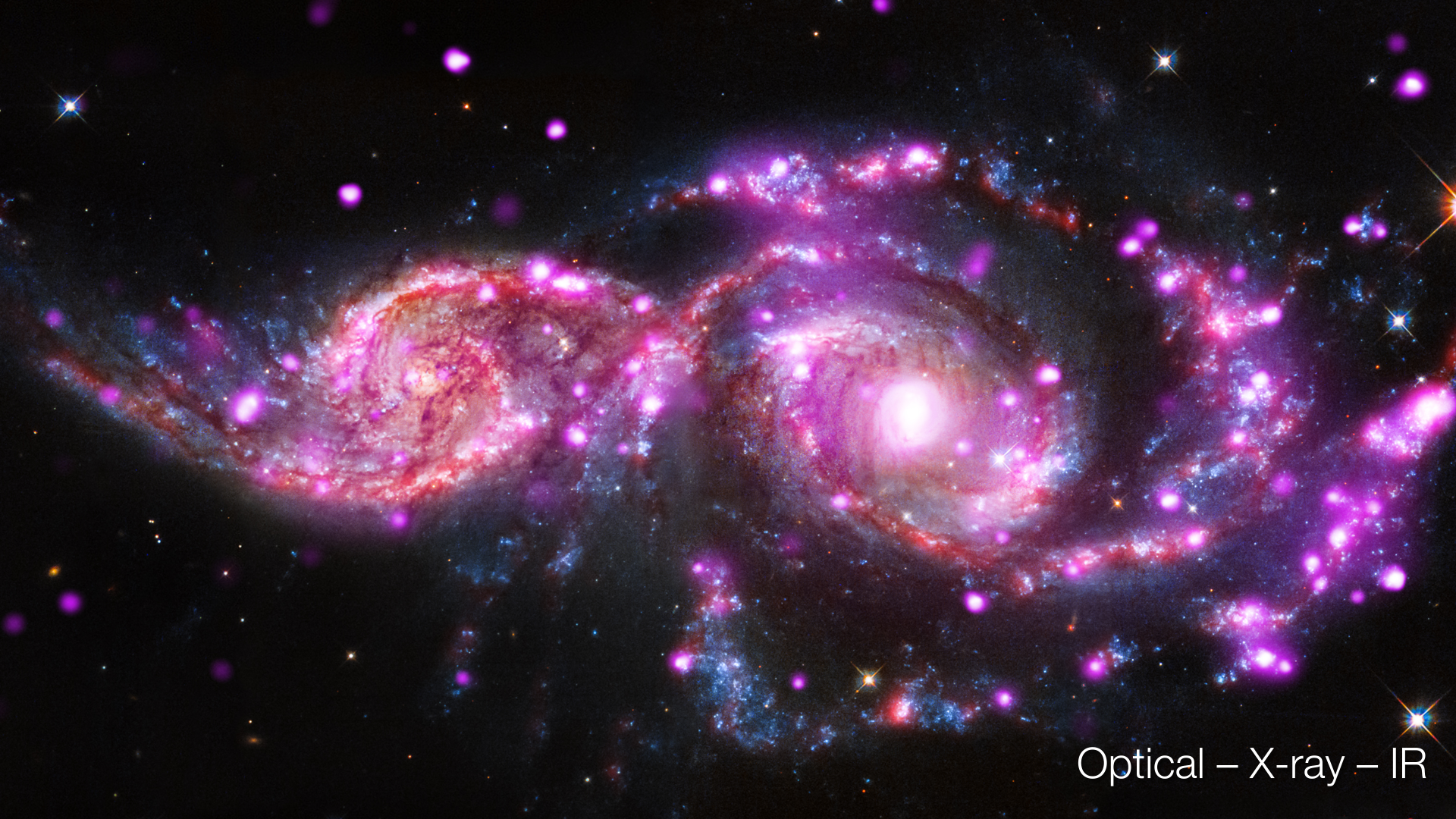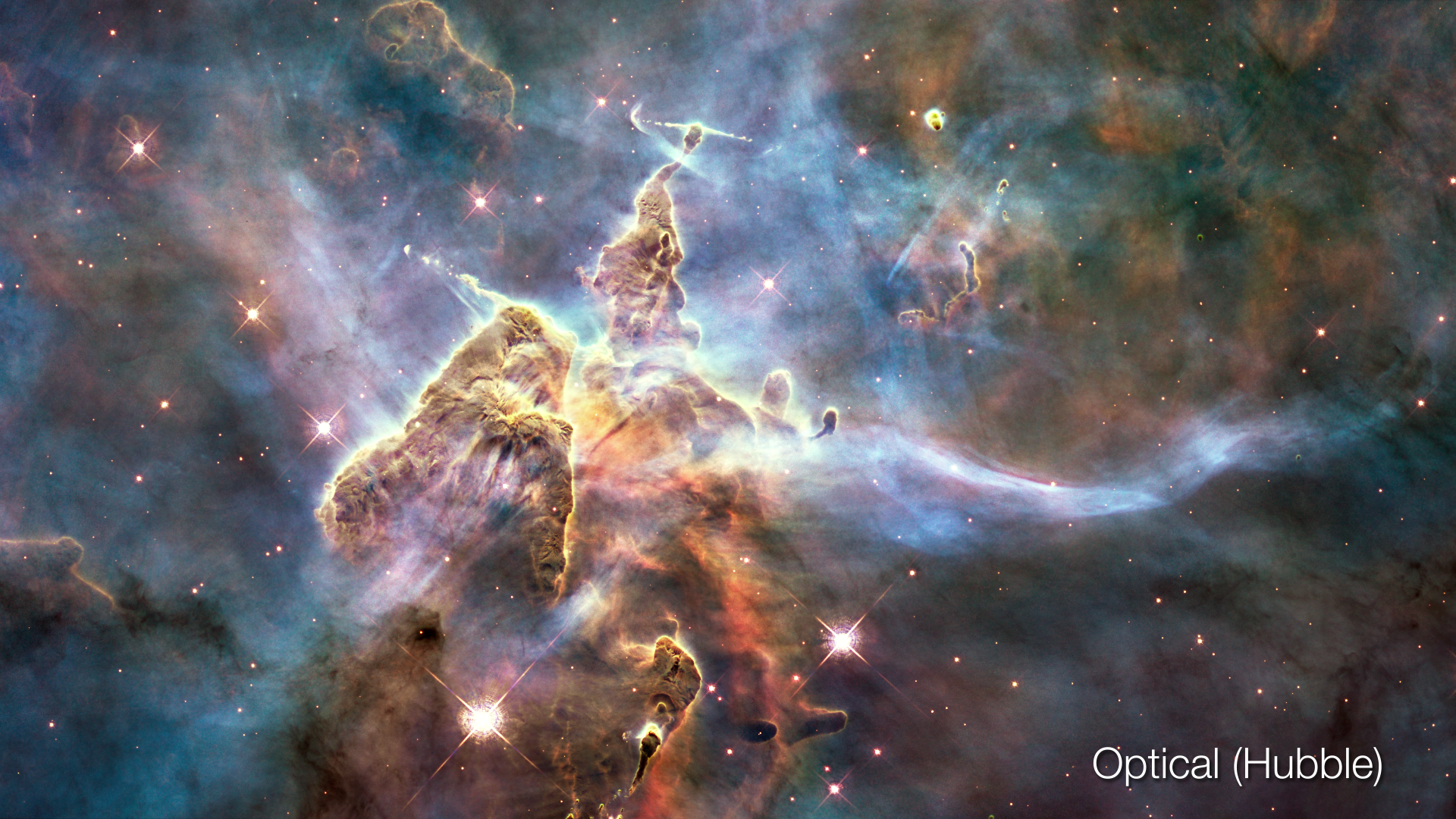Messier 82: Cigar Galaxy in Multiple Wavelengths
Massive burst of star formation in the core or M82 burst becomes clearer in infrared.
Messier 82 (M82), or the Cigar Galaxy, is an edge-on spiral undergoing a massive burst of star formation in its core. Many thousands of stars, and their surrounding gas and dust, have been stirred up. These stars are expelling violent winds that are blowing gas and dust out of the galaxy. The only hint of this in visible light are fountains of hot hydrogen gas streaming out of its disk. In infrared, the burst becomes clearer as we see massive amounts of dust also blowing out of the center.
Optical: In visible light the edge-on disk highlights the geysers of hot gas shooting out of M82's core.
Infrared: Infrared light lets us see this galaxy's full disk of stars and reveals volumes of dust (shown in red) carried along with the hot gas.
X-ray: Chandra's X-ray image reveals gas that has been heated to millions of degrees by the violent outflow.
This animation is the same as above, played twice as fast.

Hubble optical image of Messier 82
In visible light the edge-on disk highlights the geysers of hot gas shooting out of M82's core.

Spitzer Near-Infrared image of Messier 82
Infrared light lets us see this galaxy's full disk of stars and reveals volumes of dust (shown in red) carried along with the hot gas.

Chandra Far-Infrared image of Messier 82
Chandra's X-ray image reveals gas that has been heated to millions of degrees by the violent outflow.

Hubble, Spitzer and Chandra images combined
Credits
Please give credit for this item to: Video: NASA, ESA, and G. Bacon (STScI)
Image Credits:
-
Optical: NASA, ESA, and the Hubble Heritage Team (STScI/AURA)
Acknowledgment: J. Gallagher (University of Wisconsin), M. Mountain (STScI), and P. Puxley (NSF) - Infrared: NASA, JPL-Caltech, C. Engelbracht (University of Arizona)
- X-ray: NASA, CXC, JHU, D. Strickland
-
Visualizer
- Greg Bacon (STScI)
-
Image processing
- Jay Gallagher (University of Wisconsin)
- Matt Mountain (STScI)
- Phil Puxley (NSF)
- Charles Engelbracht (The University of Arizona)
- Dave Strickland (Johns Hopkins University)
-
Technical support
- Leann Johnson (Global Science and Technology, Inc.)
Release date
This page was originally published on Monday, October 15, 2018.
This page was last updated on Wednesday, November 15, 2023 at 12:40 AM EST.
Missions
This visualization is related to the following missions:Datasets used in this visualization
-
[Spitzer Space Telescope]
ID: 690This dataset can be found at: http://www.spitzer.caltech.edu/
See all pages that use this dataset -
[Hubble Space Telescope]
ID: 831 -
[Chandra: Telescope System]
ID: 1002
Note: While we identify the data sets used in these visualizations, we do not store any further details, nor the data sets themselves on our site.
